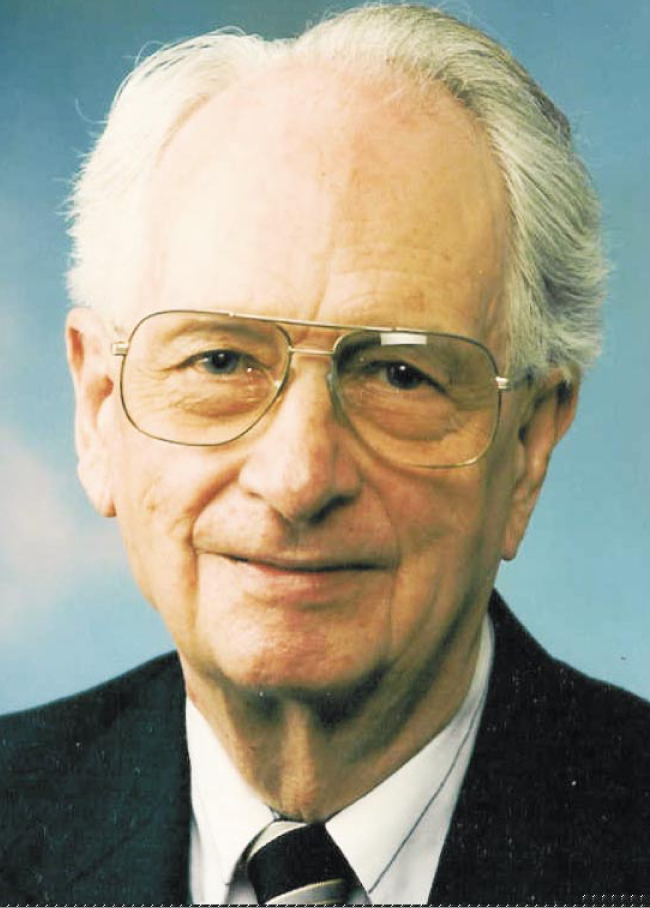Robert Hugh Tanner
DOI: 10.1063/1.1603091
After a career in acoustics and engineering science that spanned more than 65 years, Robert Hugh Tanner died quietly on 2 November 2002 in Naples, Florida.
Bob was born on 22 July 1915 in London, England. His early education in England culminated in a BSc in engineering from Imperial College, London, in 1936. After graduation, he began his professional career with the British Broadcasting Corporation as a pioneering audio engineer who developed audio techniques and studied the acoustics of coupled rooms for the world’s first high-definition television station.
During World War II, Bob served with the Royal Signals regiment of the British Army, doing R&D in artillery sound ranging, ultralow frequency microphonics, sound-ranging recording, and other military applications. Following military service, he returned to the acoustics section of the BBC research department, where he worked on the acoustical design of broadcast studios and concert halls. He participated in an investigation of the difficult acoustics of London’s Royal Albert Hall and, in 1946, became holder of a patent on an early automatic reverberation meter.
In 1947, Bob and his young family immigrated to Belleville, Ontario, Canada, where he began a 22-year career with the Northern Electric Co. He was responsible for numerous developments in audio, including speech-input equipment for radio and television applications, professional-quality public-address and sound-system equipment, the design of two innovative large master-control switching systems for the Canadian Broadcasting Corporation’s facilities in Montreal and Winnipeg, and the development of a practical electret microphone.
Bob began a parallel career in acoustical consulting in 1955. Five years later, he moved to Ottawa to form Northern Electric’s R&D division, Bell Northern Research, for which he managed the development of products ranging from audio equipment to microwave relay stations. In 1962, he earned an MSc degree from his alma mater, Imperial College, with a thesis entitled “The Acoustical Design of a Festival Theatre.”
Bob was active for many years in professional society activities, particularly those supporting the Institute of Electrical and Electronics Engineers. After serving as director of the IEEE Canadian Region, he chaired the IEEE long-range planning committee. He then became, successively, the organization’s secretary, executive vice-president, and, in 1972, president. He was the first and only member of the Canadian engineering profession to hold the presidency, and he was the first person from outside the US ever to be elected to that position.
In recognition of his skills as an engineer and as a manager, Bob was appointed in 1973 as director of industrial research at the Canadian Department of Communications, in Ottawa, Ontario. In 1975, he relocated his acoustical consulting practice to Naples, Florida, where it flourished for the rest of his life. He was consultant of record on more than 1000 projects in the US, Canada, and overseas. Especially proud of his work on the Philharmonic Hall in Naples, Italy, he regularly attended concerts, musicals, and traveling Broadway shows there, a testament to the successful acoustics he helped create.
Bob received many honors in his lifetime. In 1974, he received the IEEE Canadian Region’s highest honor, the McNaughton Gold Medal. In 1981, the IEEE presented him with the Haraden Pratt Award.
Bob was a kind, caring, able, and devoted individual who helped immeasurably to advance the acoustics profession. He was a truly accomplished and creative acoustical engineer who was greatly admired by colleagues and clients alike.


More about the Authors
William W. Lang. 1 Noise Control Foundation, Poughkeepsie, New York, US .
William J. Cavanaugh. 2 Cavanaugh-Tocci Associates Inc, Sudbury, Massachusetts, US .
